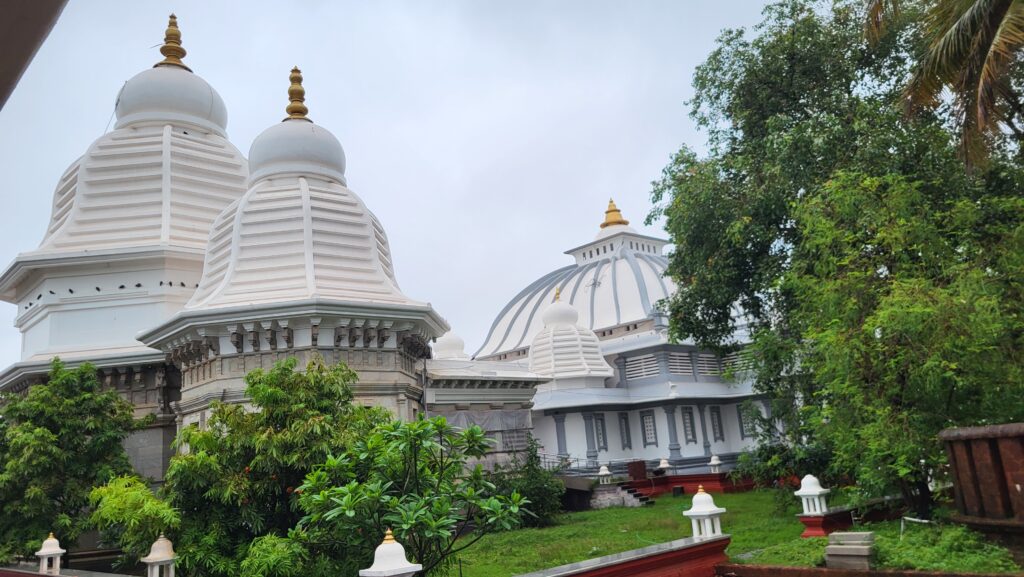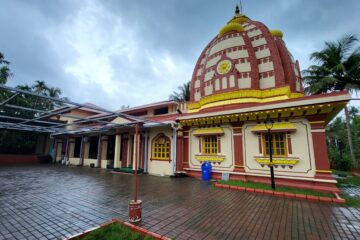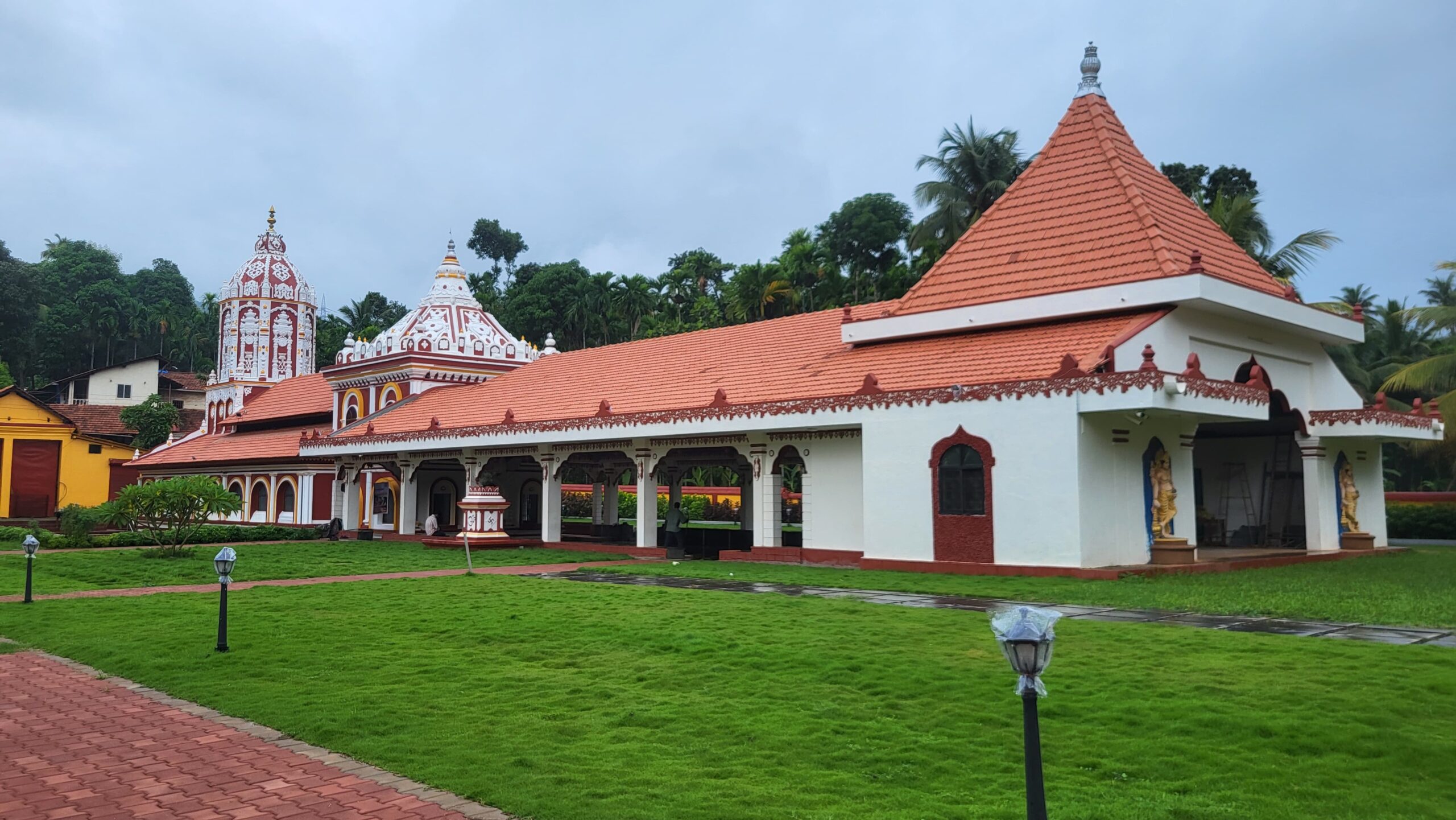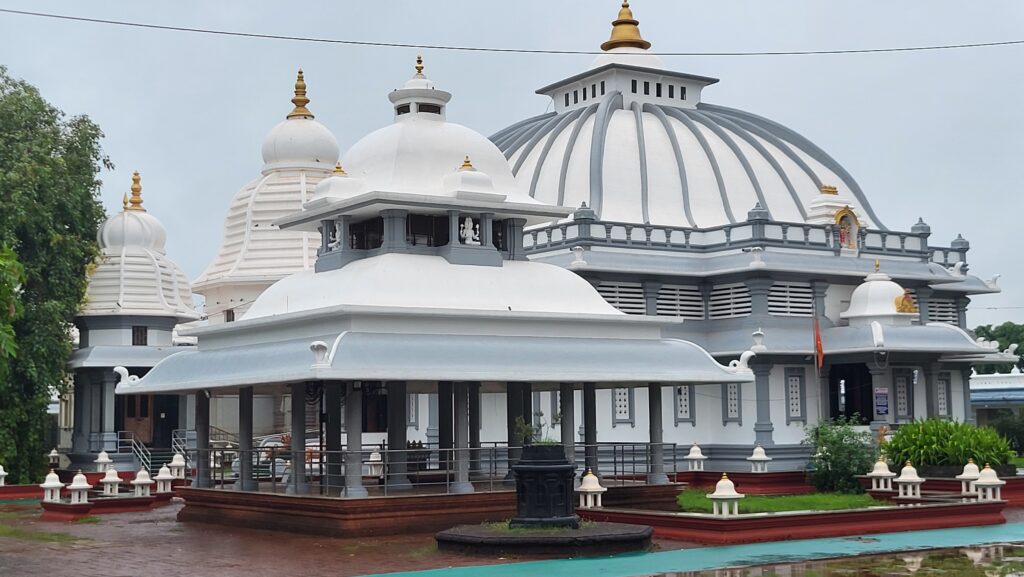
A Return to Verna: A Visit After Six Years
A recent wedding gave me the perfect reason to revisit the Shri Mahalasa Temple in Verna after nearly five or six years. The temple and its surroundings looked even more beautiful than I remembered. A notable addition since my last visit was the newly completed Mahalasa Narayani Vidyalaya, located within the temple complex. Built to complement the architecture of the temple, the school building adds significantly to the overall beauty of the premises.
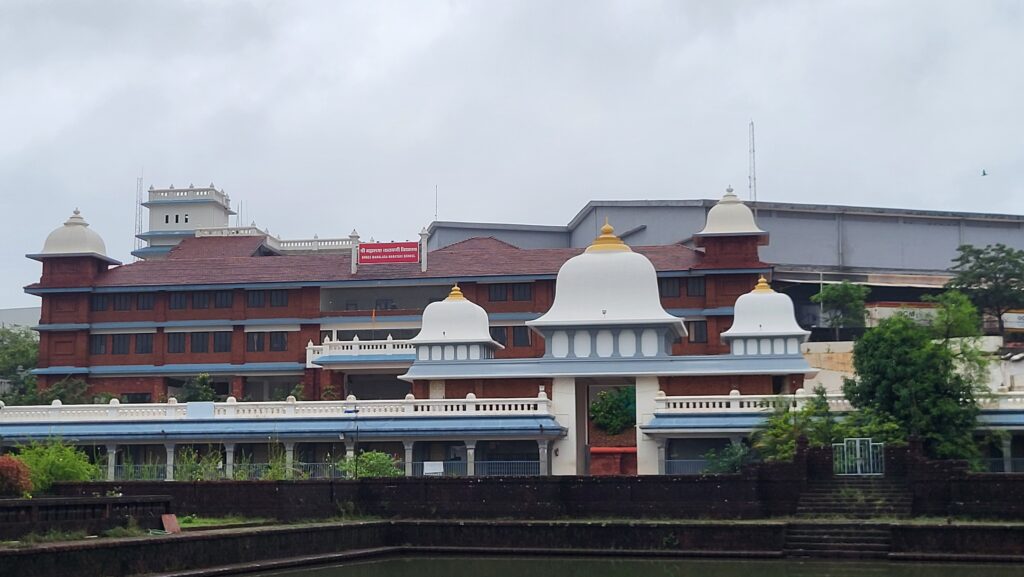
A Temple Blending Nature, Divinity, and Serenity
The temple is grand, with its majestic structure, architectural finesse, and serene surroundings. On one side lies the temple hall, on the other are administrative offices and residential rooms, and in front stands the newly constructed school. The expansive courtyard is filled with sacred trees like the banyan, peepal, audumbar, and apta. Squirrels and birds frolic among the trees, while a sacred pond adds to the peaceful ambiance. No matter how long one stays or how much one observes, the experience remains deeply fulfilling.

Mythological Origins of the Temple
The temple of Shri Mahalasa Narayani in Verna is an ancient site of worship, believed to have existed even before the Portuguese arrived in Goa. In earlier times, Verna was known as Varenyapur or Varunapur. While there is no specific historical evidence confirming the exact date of its founding, the site is mentioned in the Skanda Purana, one of the oldest Hindu scriptures, believed to have been composed between the 7th and 9th centuries CE. This suggests that the temple might have been established during or even before that period.
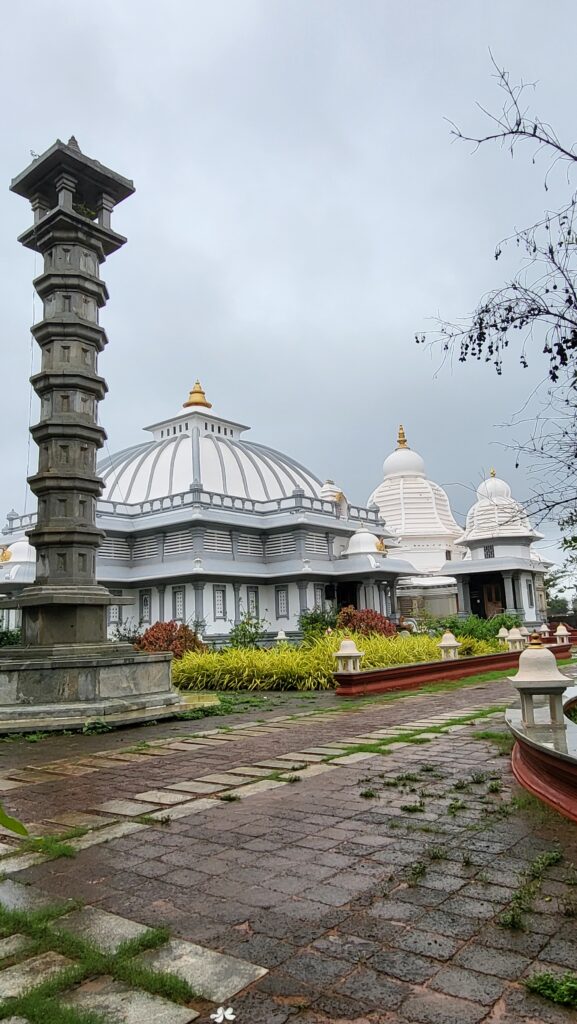
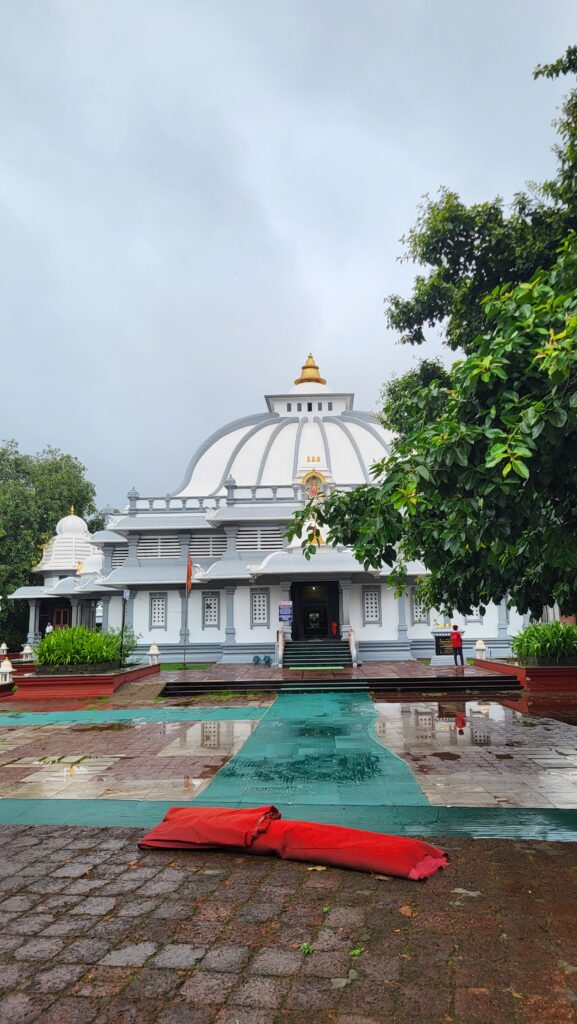
The Legend of Mahalasa in the Skanda Purana
In the Sahyadri Khand section of the Skanda Purana, two chapters titled “Varunapur Mahatmya” narrate the divine story of Shri Mahalasa. According to legend, Varunapur was a wealthy, beautiful place filled with precious gems. The people once performed a Jyotistoma Yadnya, a sacred fire ritual, to seek divine blessings. During this ritual, Lord Parashurama appeared, delighting the devotees with his presence. He instructed Varuna to build a temple at that very spot. A magnificent temple was then constructed as per his divine command—marking the celestial origin of the temple.
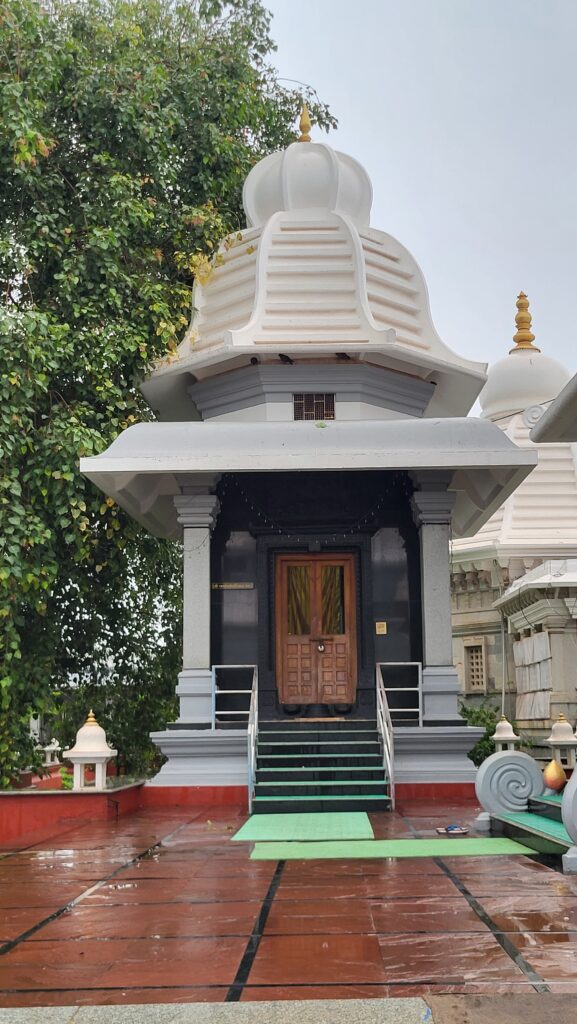
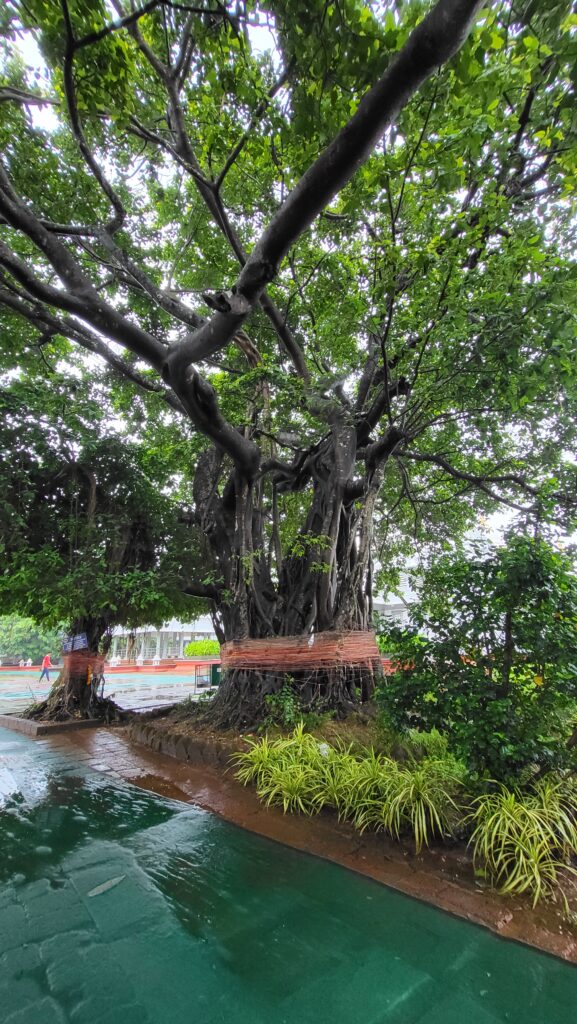
The Portuguese Destruction and Shift to Mardol
During Portuguese rule, many Hindu temples were destroyed, including the one at Verna. Only the foundation and remnants of the original temple remained. However, the idol of Goddess Mahalasa was safely relocated to Mardol, where a new temple was built and the deity was reinstalled.
Revival of the Temple in the Modern Era
Decades later, around 1975, reconstruction began at the original site in Verna. The foundation stone for the new temple was laid by Sri Abhinava Vidyatirtha Mahaswamiji, the 35th Jagadguru Shankaracharya of Sringeri Sharada Peetham. However, work progressed slowly, and it wasn’t until a few decades later that construction resumed with momentum.
A major milestone was achieved in 2005, when Sri Bharati Tirtha Mahaswamiji, the 36th Jagadguru, performed the Prana Pratishtha Kumbhabhishek (consecration ceremony) of the deity. Later, in 2014, he also inaugurated the newly built Dhyana Mandap (meditation hall), providing a peaceful space for contemplation and spiritual practice.
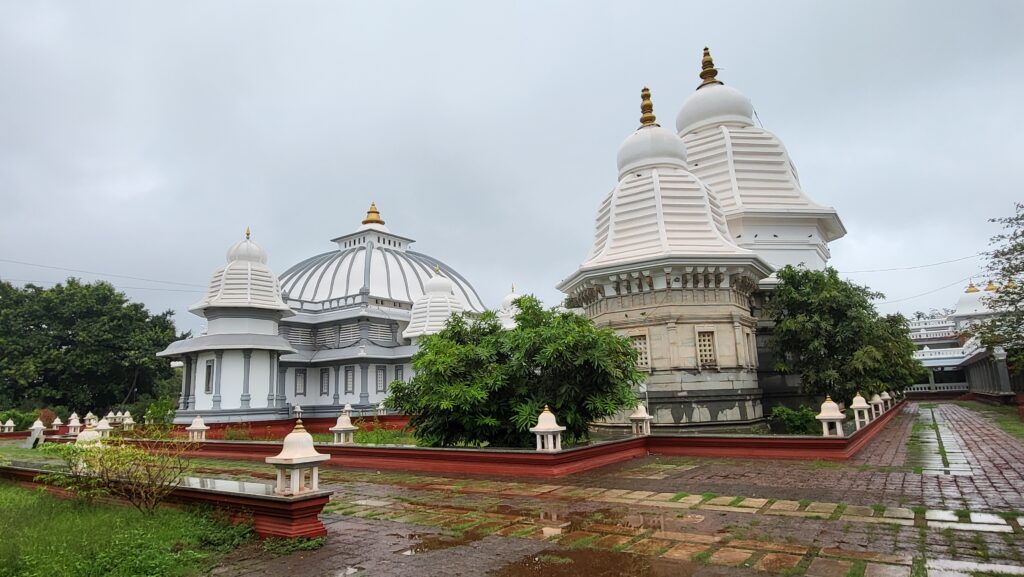
Architectural Style: Traditional Meets Contemporary
The architectural style of the Verna Mahalasa Temple is a beautiful blend of traditional Goan temple architecture and modern reconstruction. While it follows the Konkani-Hindu design, the exterior bears a refined modern touch that enhances its beauty. Key elements like the deepastambha (lamp tower), sabhamandap (assembly hall), garbhagriha (sanctum sanctorum), and ardhamandap (entrance hall) are all present.
The temple complex features lush greenery, traditional archways, courtyards, and peaceful walkways. The inner sanctum and sabhamandap are adorned with intricate carvings, colorful idols, and detailed ornamentation. On either side of the sanctum are small temples of Ganesha, Shanteri, Nagdevata and Mahalakshmi, while small shrines of Sharadamba and Adi Shankaracharya are located near the mandap entrance. The sabhamandap’s high dome and walls decorated with divine sculptures add to the spiritual atmosphere.

Continued Development and Government Support
The temple is now fully functional, hosting regular rituals, festivals, and community activities. Beautification and development efforts are ongoing. In December 2022, the Government of Goa’s Department of Archives and Archaeology signed a Memorandum of Understanding (MoU) with the Shri Mahalasa Narayani Trust. This agreement enables the trust to undertake further development and conservation of the 75,000 sq. meters temple property.
A Living Symbol of Goa’s Heritage
The Shri Mahalasa Narayani Temple at Verna is not just a place of worship but a living symbol of Goa’s cultural, spiritual, and historical legacy. While the Mahalasa Narayani temple at Mardol remains more popular today, the Verna temple holds a special place as the original site of the goddess’s worship. It stands as a sacred pilgrimage site, offering a serene and spiritually rich experience to devotees and visitors alike.
